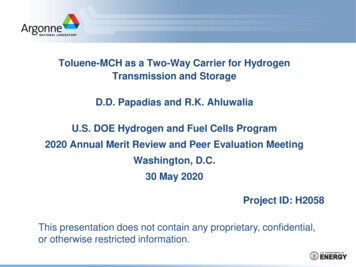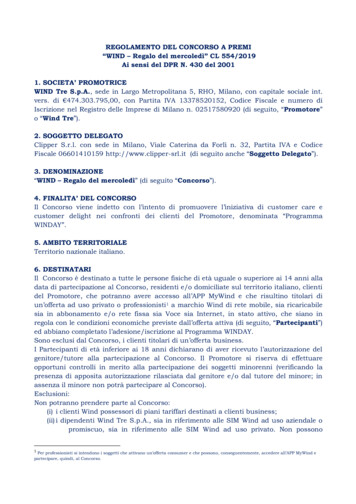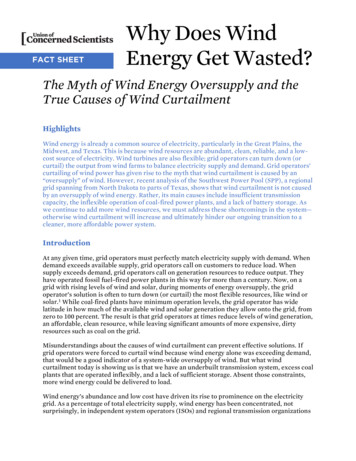
Transcription
FACT SHEETWhy Does WindEnergy Get Wasted?The Myth of Wind Energy Oversupply and theTrue Causes of Wind CurtailmentHighlightsWind energy is already a common source of electricity, particularly in the Great Plains, theMidwest, and Texas. This is because wind resources are abundant, clean, reliable, and a lowcost source of electricity. Wind turbines are also flexible; grid operators can turn down (orcurtail) the output from wind farms to balance electricity supply and demand. Grid operators’curtailing of wind power has given rise to the myth that wind curtailment is caused by an“oversupply” of wind. However, recent analysis of the Southwest Power Pool (SPP), a regionalgrid spanning from North Dakota to parts of Texas, shows that wind curtailment is not causedby an oversupply of wind energy. Rather, its main causes include insufficient transmissioncapacity, the inflexible operation of coal-fired power plants, and a lack of battery storage. Aswe continue to add more wind resources, we must address these shortcomings in the system—otherwise wind curtailment will increase and ultimately hinder our ongoing transition to acleaner, more affordable power system.IntroductionAt any given time, grid operators must perfectly match electricity supply with demand. Whendemand exceeds available supply, grid operators call on customers to reduce load. Whensupply exceeds demand, grid operators call on generation resources to reduce output. Theyhave operated fossil fuel–fired power plants in this way for more than a century. Now, on agrid with rising levels of wind and solar, during moments of energy oversupply, the gridoperator’s solution is often to turn down (or curtail) the most flexible resources, like wind orsolar.1 While coal-fired plants have minimum operation levels, the grid operator has widelatitude in how much of the available wind and solar generation they allow onto the grid, fromzero to 100 percent. The result is that grid operators at times reduce levels of wind generation,an affordable, clean resource, while leaving significant amounts of more expensive, dirtyresources such as coal on the grid.Misunderstandings about the causes of wind curtailment can prevent effective solutions. Ifgrid operators were forced to curtail wind because wind energy alone was exceeding demand,that would be a good indicator of a system-wide oversupply of wind. But what windcurtailment today is showing us is that we have an underbuilt transmission system, excess coalplants that are operated inflexibly, and a lack of sufficient storage. Absent those constraints,more wind energy could be delivered to load.Wind energy’s abundance and low cost have driven its rise to prominence on the electricitygrid. As a percentage of total electricity supply, wind energy has been concentrated, notsurprisingly, in independent system operators (ISOs) and regional transmission organizations
(RTOs) where it is windiest (Figure 1). The Midcontinent Independent System Operator(MISO), the Electric Reliability Council of Texas (ERCOT), and SPP saw wind energycomprise more than 10 percent, 20 percent, and 30 percent of their electricity mix,respectively, in 2020 (see Figure 2).Figure 1. Map of the United States Showing Average Wind SpeedsRegions labeled are the independent system operators and regional transmission organizations thatoperate the regional grids across the United States.Source: Wiser et al. (2021).As the data in Figure 2 show, wind energy curtailment does not increase in lockstep withincreases in wind energy adoption. With each passing year, wind adoption as a percentage oftotal resource mix has generally increased within all seven ISO/RTOs, while wind curtailmenthas fluctuated from year to year within each region and varies between them (Wiser et al.2021). SPP and ERCOT currently have higher adoption levels of wind than MISO, but lowercurtailment levels. The California Independent System Operator (CAISO) has higher windadoption levels than New York’s (NYISO) or New England’s (ISO-NE), yet it has lowercurtailment levels.Wind is curtailed when there is an oversupply of energy causing congestion somewhere on thebulk power system. Some describe this as being an “oversupply of wind.” However, describingwind curtailment as an “oversupply of wind” is misleading and problematic; it misstates theunderlying issues and hinders an exploration and adoption of the best solutions, discussedbelow. It also gives the impression that there is too much wind energy. If anything, theopposite is true. We need more wind energy as part of the clean, affordable, and reliableelectricity grid of the future.Union of Concerned Scientists 2
Figure 2. Wind Curtailment and Adoption by ISO/RTO by YearSource: Wiser et al. (2021).Analysis of Electricity Mix During Wind Curtailment EventsThe Union of Concerned Scientists commissioned analysis from Synapse Energy Economics toinvestigate wind curtailment in SPP. SPP has the highest level of wind adoption as apercentage of total load and is consequently the ISO/RTO most likely to experience “windoversupply” events. The analysis accessed downloadable data files of resource generation andcorresponding curtailment data, allowing measurements of how much wind was available onthe SPP grid at any given time. It examined the operation and resource mix of the SPP gridover the course of two years in five-minute increments, quantifying the portion of electricitydemand met by wind energy versus other, dirtier sources of electricity with higher costs.The results were clear: “a wind oversupply does not exist in SPP” (Camp et al. 2021). Rather, inall hours where wind was curtailed, other higher-cost, more-polluting resources were stillonline (Figure 3). And, because of coal resources’ higher marginal cost and emissions rate,electricity customers would be better off if SPP was able to curtail coal instead of wind.Customers could have saved more than 40 million and avoided nearly 1.2 million short tons ofcarbon emissions per year.2 If wind is available, burning coal is always more expensive, so whywaste wind when there is plenty of coal to displace?Union of Concerned Scientists 3
Figure 3. Coal Generation Remains Online During All Wind Curtailment Events in SPPThese four graphs depict two of the largest wind curtailment events in 2018 and 2019 in the SPPfootprint. The bright yellow section represents the portion of coal generation that could have beendisplaced by available wind energy had there been no operating constraints on the bulk power system,such as power plants with unnecessarily high minimum operating levels or transmission constraints.Source: Data are from Camp et al. (2021).Truth: Some Wind Curtailment Is Caused by Transmission ConstraintsInvestments in the bulk transmission system have not kept pace with the adoption of windenergy. Inadequate transmission capacity combined with robust wind output causes localizedcongestion on the transmission system and limits how much wind can be delivered to load.The ability of transmission to cost effectively alleviate the need for wind curtailment is wellestablished. In Texas, ERCOT established Competitive Renewable Energy Zones thatconnected concentrated wind farm development with load centers. This led to a dramaticreduction in wind curtailment after 2011 (Lee 2014), when most CREZ projects werecompleted. In MISO, the Multi-Value Projects portfolio of transmission projects was approvedto provide access to renewable energy for the states in the MISO territory that had recentlyenacted renewable energy portfolio standards. Thirteen transmission projects werecompleted, delivering between 1.50 and 2.60 in benefits for every dollar invested, mostlyfrom reduced congestion (MISO, n.d.). Both of these success stories involve buildingtransmission in anticipation of new wind development. New transmission investments canalso improve market efficiency by reducing congestion on the transmission system and thusenabling the access of lower-cost resources like wind across the system. Unfortunately, marketefficiency projects are rarely approved, with contentious debates about who benefits and whopays, and which are further clouded by incumbent interests trying to protect their marketshare from lower-cost competition (Kowalczyk 2021).Union of Concerned Scientists 4
Ultimately, transmission investments are necessary to debottleneck transmission constraints.Such investments will deliver more wind energy to consumers while displacing more costlyand dirtier resources. To blame wind curtailments caused by transmission constraints on a“wind oversupply” is wrong. Better to put the focus on solutions and call it a transmissionundersupply.Truth: Some Wind Curtailment Is Caused by Coal Operated InflexiblyOne of the primary responsibilities of ISO/RTOs is the economic dispatch of all availablegeneration resources.3 This is most efficiently achieved when the owners of resources marketcommit, allowing the market operator’s computers to turn the power plant on and off or upand down. However, many resources (including wind and coal) will often self-commit in theenergy market, a practice that essentially prevents the grid operator from turning the powerplant off. But not all self-commitment is created equal.ISO/RTO rules require wind generation to be able to be reduced as low as zero (effectivelyturning it off), while coal is allowed to stay on at a minimum operating level with minimalscrutiny of how that minimum is set4 (Denholm et al. 2018). When there are oversupply eventson the grid, the grid operator cannot turn off these coal plants and are forced to curtail wind.This lack of coal flexibility also costs customers across all coal-heavy ISO/RTOs about 1billion per year (Daniel 2018).Self-commitment of coal plants has come under increasing scrutiny in MISO and SPP over thepast few years, and as a consequence those markets have increased their reporting on the issue(Potomac Economics 2020; SPP 2019). Market commitment has increased over the past fewyears, but some power plants continue to operate inflexibly and exploit market rules like selfcommitment (Daniel 2021). The continued exploitation of self-commitment protocols—even iftransmission constraints were to be overcome—means that some wind curtailment wouldpersist as long as other power plants are operated inflexibly.Truth: Some Wind Curtailment Is Caused by Lack of Battery StorageThere is some storage capacity on the current electric grid, but only a very small amount of theannual electricity supply gets stored for later use. Luckily, this is rapidly changing. Large-scaleenergy storage increased threefold between 2016 and 2019 and is expected to increase anothersixfold between 2020 and 2023 (EIA 2021). A large portion of the wind curtailment eventswere short-duration events in hours when the local wholesale market price was negative.Those types of events are well suited to charge a four-hour battery, to be discharged whenprices have gone back up.The ability of stand-alone storage projects to help avoid wind curtailments is highly dependenton other system constraints; the benefits of storage are location-sensitive. With the currentunderbuilt transmission system, in order to help avoid wind curtailment, storage would haveto be co-located at the wind farm or upstream of transmission system constraints. If, however,transmission constraints were mitigated and resources like coal were operated more flexibly(with lower minimum operation levels), then storage could effectively help to avoidcurtailment when located in more diverse locations across the transmission and/ordistribution system.Union of Concerned Scientists 5
Wind Curtailment: Probable Tomorrow, but Avoidable TodayDown the road, when the grid is nearly or fully decarbonized, there might be sufficient windor solar on the grid to cause actual renewable energy oversupply, at which point curtailmentmight be a cost-effective choice. The need to build more transmission and storage today is notto say that grid planners should overbuild the system to deliver every single megawatt-hour ofwind generation tomorrow. At some point in the future, some amount of wind curtailmentmight be cost-optimal (i.e., the incremental cost to add storage or transmission might farexceed the benefits of avoided curtailment).5For now, at current and near-term levels of wind deployment, significant amounts of windcurtailment can be avoided by building transmission to more effectively move renewableenergy across the grid, by ending uneconomic self-commitment so that coal plants can beturned down to a greater degree and renewables can get from the grid to the load, and bybuilding storage to soak up any remaining renewable energy that cannot be used or exported.Joe Daniel is a senior energy analyst and manager, electricity markets in the UCS Climate andEnergy Program.Sam Gomberg is a senior energy analyst and manager, transmission policy in the UCS Climateand Energy Program.ENDNOTES1.There are many ways to define a resource’s “flexibility” including how fast it can increase ordecrease output (its ramp rate). By this metric, resources like wind, solar, and storage are amongthe most flexible resources available to grid operators (Aho et al. 2012).2.These annual numbers reflect the average over the two-year study period. This analysisinvestigated only carbon dioxide, but coal plants are also responsible for a host of other harmfulpollutants including sulfur oxides, nitrogen oxides, particulate matter, and heavy metals. Valuesare reported in short tons (2,000 pounds).3.Merit-order dispatch is one of the fundamental responsibilities of grid operators. Grid operatorsline up resources from lowest cost to highest cost, dispatch the lowest-cost resources first andmove up the merit-order line, calling on increasingly expensive resources until demand is met.This ensures that the lowest-cost resources are called on as frequently as possible, and highercost resources are only dispatched when they are needed.4.The physical constraints of some power plants, like coal plants, are real. And while these powerplants do have physical limits to how flexibly they operate, they are generally not operating withtheir maximum flexibility. There is also some uncertainty around how expensive it is to cycle acoal plant versus how much benefit that cycling could provide. A study by the NationalRenewable Energy Laboratory found that the benefits from increased wind integration farsurpassed the costs of increased coal cycling (Denholm et al. 2018).5.Most studies that analyze what a fully decarbonized electric grid will look like show that it willinclude a lot more wind and solar, as the lowest-cost path to decarbonization. That much windand solar is likely to create moments when curtailment of renewables is necessary andimpossible to avoid. It is also worth noting that those studies are looking at 2030 or beyond andevaluate an electric grid with significantly more renewables, more transmission, more storage,and less coal.Union of Concerned Scientists 6
REFERENCESAho, J., A. Buckspan, J. Laks, Y. Jeong, F. Dunne, L. Pao, P. Fleming, M. Churchfield, and K. Johnson .2012. Tutorial of Wind Turbine Control for Supporting Grid Frequency Through Active Power Control.Golden, CO: National Renewable Energy Laboratory. https://www.nrel.gov/docs/fy12osti/54605.pdfCamp, E., A. Takasugi, and P. Knight. 2021. Analysis of Wind Curtailment in Southern Power Pool, 2018–2019. Cambridge, MA: Synapse Energy Economics.Daniel, J. 2018. Out-of-Merit Generation of Coal-Fired Power Plants in Organized Competitive Markets.Dayton, OH: U.S. Association of Energy Economics.Daniel, J. 2021. Comments Regarding Energy and Ancillary Services Markets. Technical ConferenceBefore the Federal Energy Regulatory Commission. Docket No. AD21-10-000. October 12, 2021.Denholm, P., G. Brinkman, and T. Mai. 2018. “How Low Can You Go? The Importance of QuantifyingMinimum Generation Levels for Renewable Integration.” NREL/JA-6A20-68961. Energy Policy115:249-257. https://doi.org/10.1016/j.enpol.2018.01.023EIA (Energy Information Administration). 2021. Battery Storage in the United States: An Update onMarket Trends. Washington, DC: Department of Energy. atterystorage/pdf/battery storage 2021.pdfKowalczyk, A. 2021. “Utility Entergy Stymied Transmission Projects That Might Have Prevented SomeNew Orleans Blackouts.” Canary Media, September 30, 2021. ght-have-prevented-some-neworleans-blackoutsLee, A. 2014. “Fewer Wind Curtailments and Negative Power Prices Seen in Texas after Major GridExpansion.” Today in Energy, June 24, 2014. Washington, DC: Energy Information etail.php?id 16831Lew, D., G. Brinkman, E. Ibanez, A. Florita, M. Heaney, B.-M. Hodge, M. Hummon, et. al. 2013. TheWestern Wind and Solar Integration Study Phase 2. NREL/TP-5500-55588. Golden, CO: NationalRenewable Energy Laboratory. https://www.nrel.gov/docs/fy13osti/55588.pdfMISO (Midcontinent Independent System Operator). No date. “Multi-Value Projects.” Carmel, lti-value-projects-mvpsPotomac Economics. 2020. A Review of the Commitment and Dispatch of Coal Generators in MISO.Fairfax, VA. s/2020/09/Coal-DispatchStudy 9-30-20.pdfSPP Market Monitoring Unit. 2019. Self-Committing in SPP Markets: Overview, Impacts, andRecommendations. Little Rock, AR.Wiser, R., M. Bolinger, B. Hoen, D. Millstein, J. Rand, G. Barbose, N. Darghouth, et. al. 2021. Land-BasedWind Market Report: 2021 Edition. Berkeley, CA: Lawrence Berkeley National 2021%20Edition Full%20Report FINAL.pdfFIND THIS DOCUMENT thsThe Union of Concerned Scientists puts rigorous, independent science to work to solve our planet's most pressingproblems. Joining with people across the country, we combine technical analysis and effective advocacy to createinnovative, practical solutions for a healthy, safe, and sustainable future.www.ucsusa.org NOVEMBER 2021 UNION OF CONCERNED SCIENTISTS
Why Does Wind Energy Get Wasted? The Myth of Wind Energy Oversupply and the True Causes of Wind Curtailment . FACT SHEET . Highlights . Wind energy is already a common source of electricity, particularly in the Great Plains, the Midwest, and Texas. This is because wind resources are abundan

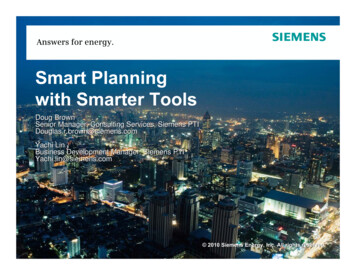


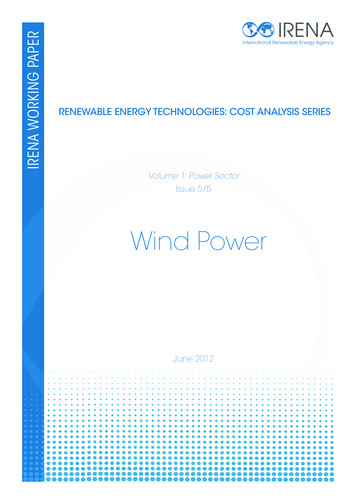
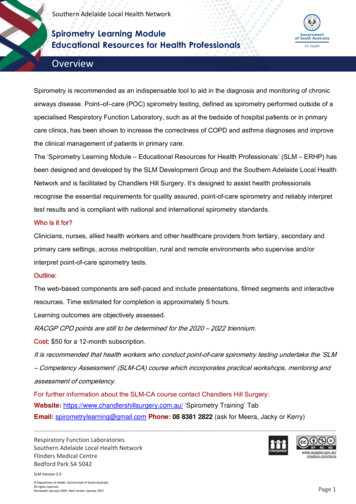
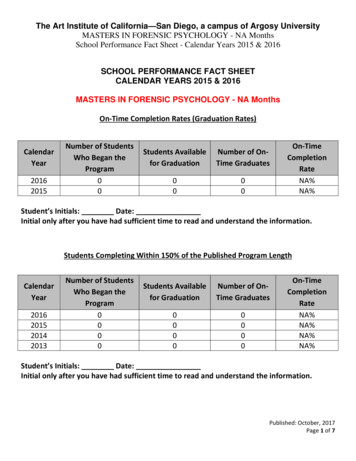

![[Page 1 – front cover] [Show cover CLEAN GET- AWAY 978-1 .](/img/13/9781984892973-6648.jpg)
